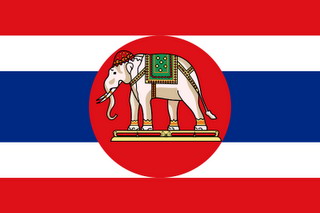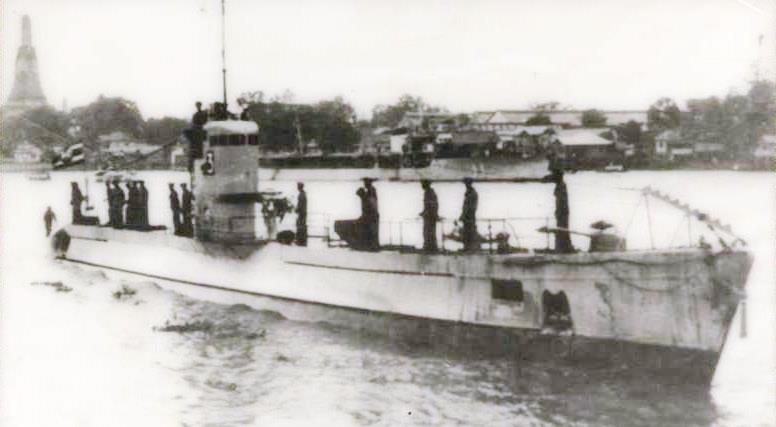



© 2016 Bob Hackett
1 October 1936:
Kobe. Laid down at Mitsubishi Shipbuilding as boat No. 3, a 374.5-ton
submarine.
14 May 1937:
Launched and named SINSAMUT.
30 April 1938:
Completed and delivered to the Royal Siamese Navy.[1]
5 June 1938:
SINSAMUT and sisters MATCHANU, WIRUN and PHLAI-CHUMPHON
depart Kobe for Siam.
9 June 1938:
The four submarines arrive at Kirun, Formosa (Keelung,
Taiwan).
11 June 1938:
All depart Kirun.
15 June 1938:
The four submarines arrive at Manila, Philippines.
June 1938:
The submarines arrive at Legaspi, Philippines.
June 1938:
All depart Legaspi for Siam. Enroute, the four submarines are
replenished by Siamese ship SICHANG.
25 June 1938:
The submarines arrive at RSN Sattahip Naval Base.
29 June 1938:
The submarines arrive at Bangkok, capital of Siam.
19 July 1938:
SINSAMUT and her three sisters are commissioned in the
RSN together with Japanese-built coast defense ship HSMS SRI AYUDHYA.
1938 and 1939:
Gulf of Siam. The submarines undergo several training
exercises.
24 June 1939:
Siam changes its name to Thailand.
22 June 1940: The Fall of France:
The ill-equipped, demoralized and
poorly led French Army collapses. As revenge for Germany, Hitler chooses the
surrender site at Compiègne and the armistice is signed in same railway carriage
in which the 1918 Armistice was signed which ended the First World War. Soon
thereafter, the defeated French form a Vichy government that collaborates with
the Nazis.
October 1940:
A border disputed erupts into armed conflict. Thailand
launches the Franco-Thai War and invades Vichy French Indochina. The Thais
reclaim Laos. The navy is mobilized to protect Thailand's eastern territorial
waters. The submarines conduct reconnaissance in the Gulf of Thailand.
17 January 1941: The Battle of Ko Chang:
Gulf of Thailand. The
submarines are unable to prevent or participate in the battle in which the
larger Vichy French Navy wins a decisive victory.
Following the battle, the submarines are sent to patrol the vicinity of Ream Naval Base in Sihanoukville,
Vichy French Indochina (Cambodia), but no further naval confrontations occur.
28 January 1941:
Japan mediates the conflict and a general armistice
is declared.
9 May 1941:
Tokyo. A peace treaty is signed between Thailand and
Vichy France.
January 1942:
Thailand officially joins World War II. The submarines
are in service throughout World War II, but they do not see any action.
Post-World War II:
THe four submarines lapse into dilapidated
condition because supplies and parts are unavailable as a result of the Allied
occupation and disarmament of Japan. The RTN's battery factory is not capable of
manufacturing batteries for the submarines. The four submarines are moored in
the Chao Phraya River near Siriraj Hospital Pier.
29 June 1951: “Manhattan Rebellion”:
After the failed revolt by a
group of junior naval officers against Thailand's Prime Minister, the Navy loses
its power and influence.
16 July 1951:
The Submarine Group is dissolved.
30 November 1951:
All four boats are decommissioned. Later, the Navy
sells the submarines as a scrap to the Siam Cement Co. for 500,000 Baht.
Authors' Notes:
[1] The Royal Thai Navy's submarines were named after literary characters known for their mythical diving abilities from the
Ramakien, Phra Aphai Mani, and Khun Chang Khun Phaen.
Thanks go to Watchara Yui of Thailand, Sander Kingsepp of Estonia and the guys at Axis History Forum.
– Bob Hackett.

